On Friday, a glorious winter day, I visited Longwood Gardens with my horticulturist buddies Shon and Vince. Of course, we zipped through the conservatory, too hot on a warm, sunny day, and heavily perfumed with the sweet scent of lilies.
There’s a floral performance for everyone at Longwood and although the orchid display disappointed Vince, Shon appreciated vast swaths of perfectly grown bedding plants, especially tall stocks (Matthiola ‘Figaro Light Rose’) while I enjoyed magnificent Bismarkia nobilis palms, their giant bluish fronds rising like high-backed throne chairs dedicated to the son of the sun god.
Agreement among horticulturists is rare. Nonetheless, we unanimously admired a critical landscape element required to stage a fabulous flower show—the expertly manicured turf.
The Witch Hazels are in Bloom
But, for us, the highlight was outdoors in the winter garden where witch hazels, Hamamelis species and cultivars, are in bloom.
The winter blooming shrubs include a handful of Asian and native species and nearly 100 named cultivars, most of the interspecific cross, Hamamelis x intermedia. Bred at the Arnold Arboretum of Harvard University in the 1920s, it is a cross between Japanese and Chinese species, Hamamelis japonica x Hamamelis mollis, respectively.
Most Hamamelis species and cultivars bear blooms in yellow shades, including fragrant Chinese witch hazel, Hamamelis mollis, our native, scented fall blooming Hamamelis virginiana, and Hamamelis japonica, responsible for contributing a range of colors from yellow to coppery-orange to the gene pool.
Although its genes for deeply colored flowers are passed on to Hamamelis x intermedia cultivars such as ‘Diane,’ Hamamelis japonica contributes no scent, and ‘Diane,’ valued for its early red blooms, has none.
Some witch hazel cultivars, including ‘Arnold Promise’–a favorite each of us grows courtesy of Vince’s nursery–inherited the sweet scent of its Hamamelis mollis parent; others, such as ‘Pallida,’ did not. Though many sources, including the Royal Horticultural Society (RHS), report fragrance, we detected no fragrance on the ‘Pallida’ shrubs in full bloom at Longwood.
Red and orange-flowered cultivars are less common, so we covet them
We particularly coveted the copper-flowered cultivar ‘Jelena,’ which earned an Award of Garden Merit (AGM) from the RHS for its early, clean floral display of coppery-orange blooms, good red fall color, and light fragrance.
Some cultivars hold their leaves through winter and are therefore less effective in bloom; a clean floral display is critical on witch hazels such as stunning ‘Jelena.’
At Longwood ‘Pallida,’ ‘Primavera,’ and the other yellow-flowered cultivars are more vigorous than ‘Jelena.’ Sometimes sold in the US as ‘Copper Beauty,’ it is enthusiatically recommended by Andrew Bunting of the Scott Arboretum, who ranked Hamamelis cultivars for performance and fragrance. ‘Arnold Promise,’ a later blooming cultivar, is described as slightly fragrant in the Scott Arboretum rankings; I haven’t smelled the few Hamamelis x intermedia cultivars designated as fragrant.
Fortunately, Hamamelis mollis lends its sweet scent to some of its off spring, while Hamamelis japonica provides the deeper colors we covet in red flowered ‘Diane.’
Witch hazels such as the clear yellow, mildly scented flowers of Hamamelis x intermedia ‘Primavera,’ are on display in public gardens and specialty nurseries around the region in February and early March. Visit the Scott Arboretum, Morris Arboretum, and Rare Find Nursery to see and smell the blooms of Hamamelis species and cultivars.
Let me know which cultivars you fancy. Rare Find Nursery offers an extensive selection of Hamamelis species and cultivars, including those pictured and discussed here as well as most ranked for performance and fragrance on the Scott Arboretum blog. For more great winter shrub recommendations for your garden, see also 10 AGM winter flowering shrubs, including Hamamelis x intermedia ‘Arnold Promise,’ all of which earned the RHS Award of Garden Merit.

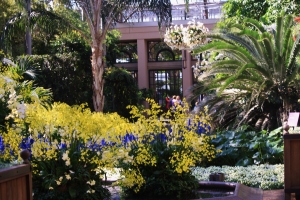
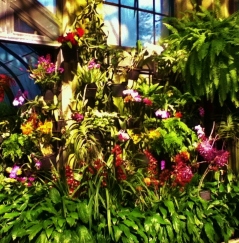

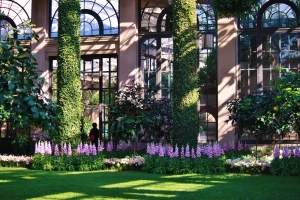
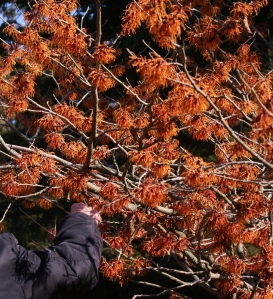
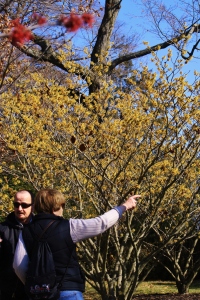


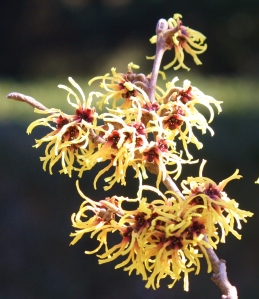
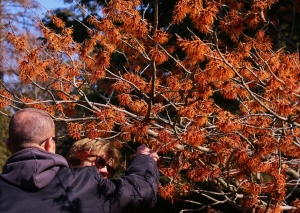
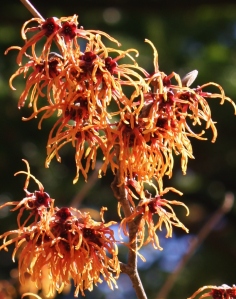
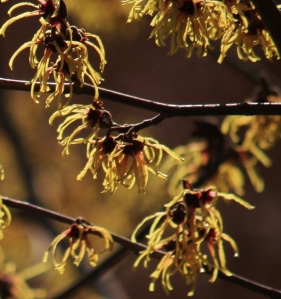

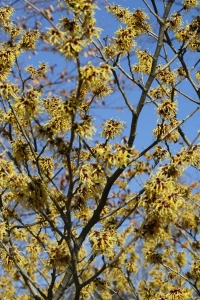
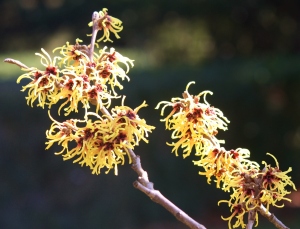
Hi Judy,
It is the season of the Witch! My own Hamamelis x intermedia ‘Pallida’ blooms just outside my kitchen window. This favorite shrub deserves special placement in the garden where its sunny wintry bloom can be coveted. The witch hazel collection at Longwood Gardens is placed perfectly between the Visitor’s Center and the main conservatory. How many times have I lingered there, enjoying the variation and splendor of this grouping?
Your pictures bring a Longwood visit home and shorten the trip significantly.
Hey, Chris. It’s good to hear from you. It’s been too long. Vince asked me to send his regards. Field trips are great fun. I hadn’t been to Longwood in years.
Hi Judy. Give a shout out to Vince for me. Would love to talk if you have a chance. Shoot me an email.
Chris
hi Judy The Plants are beautiful. The church is being sold so i won’t be at the garden much longer.